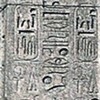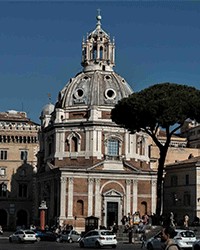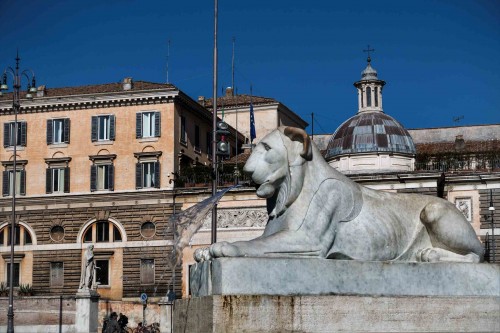
One of the two lions decorating the base of the Flaminio Obelisk, Giuseppe Valadier, Piazza del Popolo
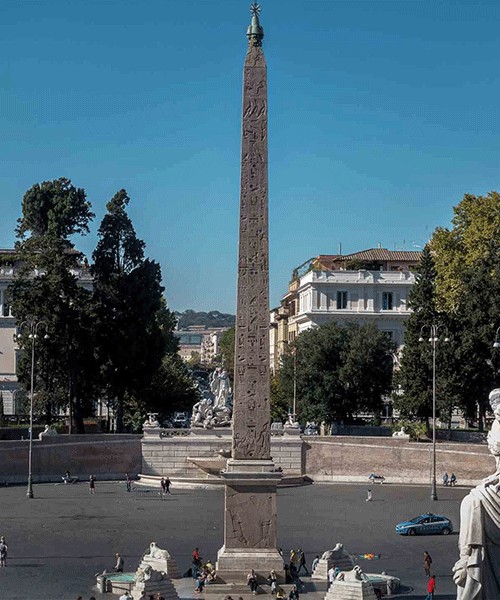
Flaminio Obelisk, Piazza del Popolo, view from Pincio Hill
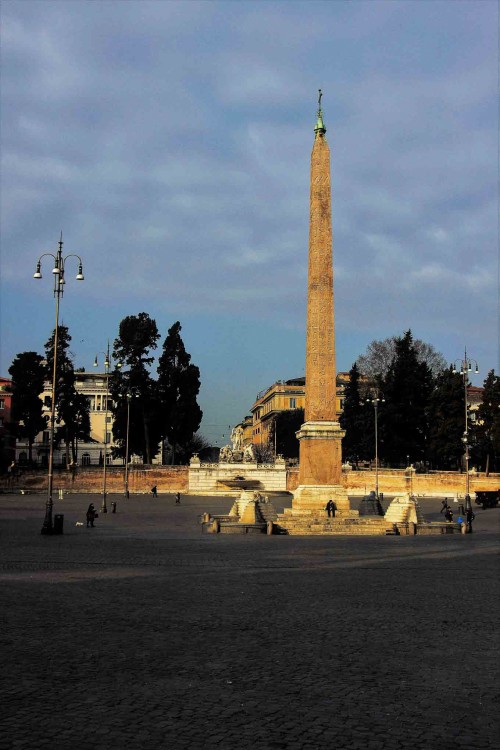
Flaminio Obelisk, Piazza del Popolo

Flaminio Obelisk, fragment, Piazza del Popolo
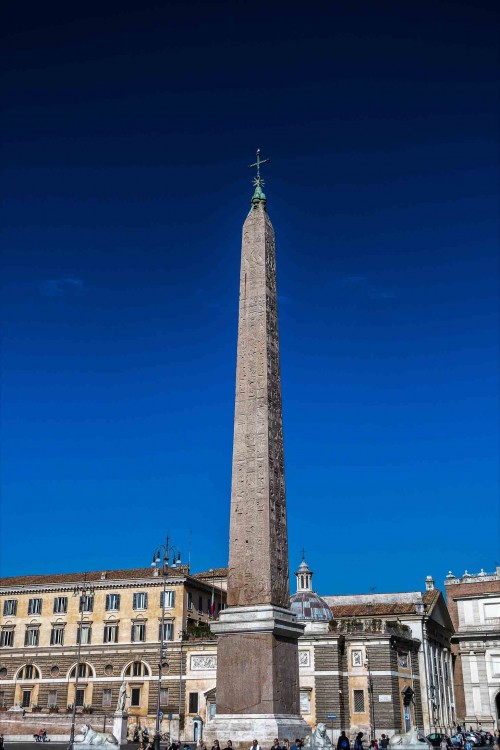
Flaminio Obelisk, Piazza del Popolo
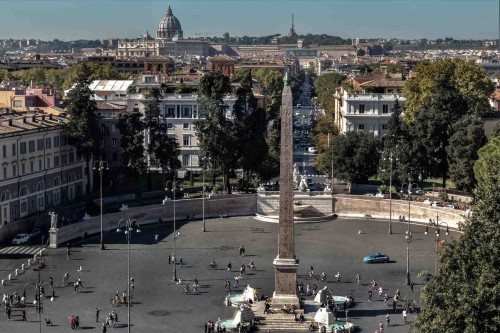
Flaminio Obelisk, Piazza del Popolo, view from Pincio Hill
In the middle of the Piazza del Popolo stands the second largest Roman obelisk. The hieroglyphs on it tell the story of Pharaoh Seti I and his son Ramses, who ruled in the XIII century B.C. The 24-meter high monument was initially located in Heliopolis, then in the year 10 A.D. it was brought to Rome as a sort of war trophy, after the conquest of Egypt by Emperor Octavius Augustus. The valuable prize was entrusted to the populace of Rome, while the Latin inscriptions on the obelisk inform that the emperor offered it to the Sun, in order to ensure its graciousness.
In the middle of the Piazza del Popolo stands the second largest Roman obelisk. The hieroglyphs on it tell the story of Pharaoh Seti I and his son Ramses, who ruled in the XIII century B.C. The 24-meter high monument was initially located in Heliopolis, then in the year 10 A.D. it was brought to Rome as a sort of war trophy, after the conquest of Egypt by Emperor Octavius Augustus. The valuable prize was entrusted to the populace of Rome, while the Latin inscriptions on the obelisk inform that the emperor offered it to the Sun, in order to ensure its graciousness.
The obelisk stood in an the eastern part of the spina of the old hippodrome (Circus Maximus). Felled or destroyed during late antiquity it broke into several pieces. In time covered with ground, it stayed thus until the XV century when it was once again uncovered. Since it was not known what to do with it, it lay forgotten until the end of the following century, when the great constructor, Pope Sixtus V, ordered it to be repaired and put up once again as the principal decoration of Piazza del Popolo (1589). This complicated from the engineering standpoint work, was entrusted by the pope to his favored architect Domenico Fontana. The architect had previously exhibited wit and knowledge in putting up another obelisk at St. Peter’s Square (Piazza di San Pietro), which was an even more complicated task. The inscription and the pope’s coat of arms are visible under the cross (three mountains and a star) and in this way the commemorate the work of the pope from the Peretti family.
The obelisk greeted visitors coming into Rome, from the north (via Flaminia) and was a symbol of the famed past of the city, which was used to serve the greater glory of the Roman Catholic Church and its earthly representative – the pope.
The fountain which had existed here since 1570, designed by Giacomo della Porta was moved in the direction of via del Corso.
It was not until the XIX century, within the scope of modernizing and embellishing the square, that the obelisk was adorned with statues of lions, from whose maws water flows out. This work was entrusted to the outstanding architect of that time – Giuseppe Valadier. It was at that time that, della Porta’s fountain was ultimately moved to the Piazza Nicosia.
The Flamino Obelisk is the second after the Lateran Obelisk, structure of this type, which was transported by the Romans from Egypt. Its name come from the aforementioned, ancient via Flaminia, leading into Rome, which also lend its name to the Porta Flaminia city gate, meaning present-day Porta del Popolo.










